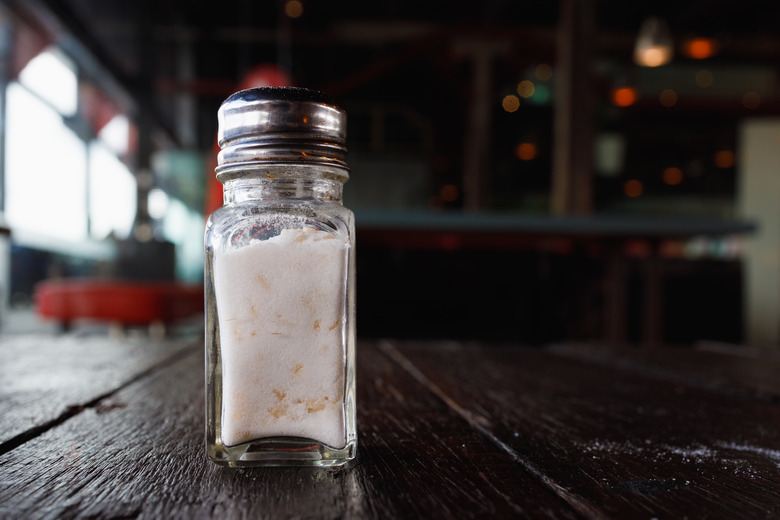Why Do People Put Rice In Salt Shakers?
We may receive a commission on purchases made from links.
If you've ever dined out at a restaurant that has clear salt shakers on the table, you might've noticed something a little unusual inside the container. Where you might only expect to see salt, you've likely spotted grains of rice as well. What gives?
As it turns out, you probably are already familiar with the concept behind the answer. Salt is hygroscopic, meaning it absorbs moisture — especially moisture that's in the air. When it does so, it dissolves ever so slightly, causing the individual grains to get sticky and clump together. And if you've ever tried to get clumpy salt out of a table shaker, you know that it's a next-to-impossible task.
But if you drop about a half teaspoon of uncooked rice into your salt shaker, you can prevent the salt from clumping. Rice is also hygroscopic, which is why some folks stick their phones in rice after it's been dropped in water. "Rice can absorb some amount of moisture preferentially over salt, so that it gets locked inside the rice grains rather than the salt grains," food scientist Dr. Bryan Quoc Le, author of 150 Food Science Questions Answered, tells Hunker. "Since rice is mostly starch, it doesn't dissolve and cling to the salt."
The grains should be large enough not to fall out of the shaker, so you don't have to worry about accidentally crunching on some uncooked rice after you've sprinkled salt onto your food.
What rice alternatives can you use?
What rice alternatives can you use?
If you don't have any rice on hand, other types of food do the trick, too. "Other items you can try in your salt shaker include dried beans, cloves, soda crackers, dried parsley, and coffee beans," Olivia Roszkowski, chef-instructor at the Institute of Culinary Education, tells Hunker. "Note that some of these items like parsley or cloves might impart a small amount of flavor onto the salt."
But Dr. Le suggests something even more effective. "Food-grade packets of calcium chloride or silica gel, both of which are more hygroscopic than rice or salt, will be much better at absorbing excess moisture from the air," he says.
While salt clumping is more likely to happen in humid climates, where there's naturally more moisture in the air, it could still happen in a dry climate — for instance, if you keep your salt in the kitchen, where steam can build up. So really, anyone who uses salt shakers can benefit from this hack.
